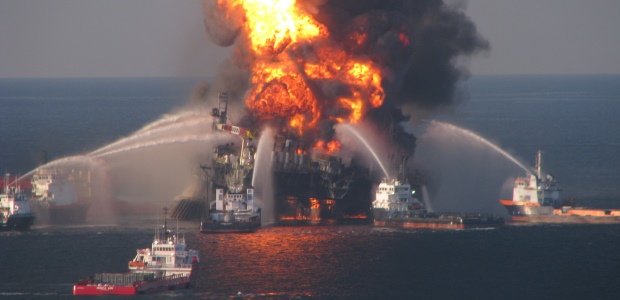
CSB Releasing Part of Macondo Well Report June 5
The first two of four volumes contain a summary of events leading up to the April 2010 explosion and fire on the Deepwater Horizon drilling rig and "critical technical findings" on the blowout preventer and management systems.
The Chemical Safety Board will release volumes one and two of its investigative report on the Macondo well blowout during a June 5 public meeting in Houston. The April 20, 2010, explosion and fire aboard the Deepwater Horizon drilling rig killed 11 workers and caused a major oil spill in the Gulf of Mexico.
CSB Chair Rafael Moure-Eraso released a statement that explains what these two volumes contain and how CSB's investigation has differed from other examinations of the blowout.
"The CSB examines this event from a process safety perspective, integrating fundamental safety concepts, such as the hierarchy of controls, human factors, and inherent safety into the U.S. offshore vernacular. While these concepts are not new in the petrochemical world or in other offshore regions around the globe, they are not as commonplace in the U.S. outer continental shelf. At the public meeting, investigators will present for board consideration what I believe is a very comprehensive examination of various aspects of the incident," he said. "Going beyond other previously released reports on the accident, the CSB explores issues not fully covered elsewhere, including:
- The publication of new findings concerning the failures of a key piece of safety equipment—the blowout preventer—that was, and continues to be, relied upon as a final barrier to loss of well control.
- A comprehensive examination and comparison of the attributes of regulatory regimes in other parts of the world to that of the existing framework and the safety regulations established in the U.S. offshore since Macondo.
- In-depth analysis and discussion of needed safety improvements on a number of organizational factors, such as the industry’s approach to risk management and corporate governance of safety management for major accident prevention, and workforce involvement through the lifecycle of hazardous operations."
Volume 1 summarizes events leading up to the blowout, and volume 2 contains "several new critical technical findings" about the blowout preventer that failed to prevent the spill.
Two more volumes will be released later this year—volume 3 about federal regulatory oversight of the offshore energy industry and volume 4 about organizational and cultural factors that contributed to the incident.